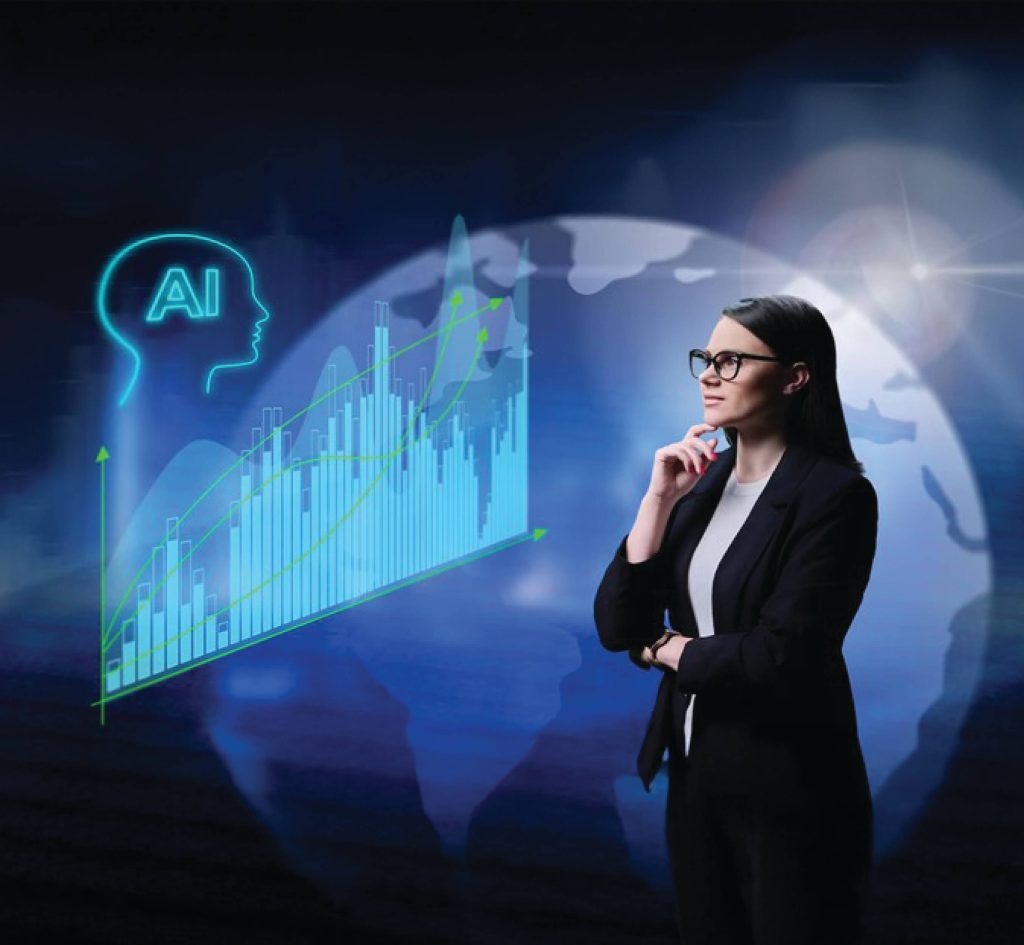

AI Trends Are Not What You Think
Introduction:
Artificial Intelligence (AI) is evolving at an unprecedented pace, reshaping industries and redefining how businesses operate. However, as we look ahead to 2025, the AI trends that will dominate the landscape might not align with conventional expectations. Instead of dramatic breakthroughs, the focus is shifting toward practical, scalable solutions that integrate seamlessly into everyday operations.
This article delves into the key trends shaping data analytics in 2025, with a particular focus on the transformative role of AI.
The Myth of Fully Autonomous AI Systems
Completely autonomous AI systems face some big hurdles. AI systems get overwhelmed and confused when they deal with so much information. This often leads to potential errors. On top of that, it shows unexpected behavior that wasn’t part of the original programming at the individual level.
Underestimation of Human Factor
People often overlook the vital role humans play in AI implementation. Research shows that AI-enhanced decision processes need human oversight for final decisions. Companies that use AI just to replace employees see only short-term gains in productivity.
Real value comes from shared intelligence where:
- Human leadership and creativity work alongside AI's speed and scalability
- Experts help explain AI decisions in evidence-based industries
- Professionals keep watch over AI initiatives
Data Trends 2025
Data has become an invaluable asset, and its role is only expanding. In 2025, several notable trends are reshaping how data is managed and used:
- Real-Time Data Processing: Organizations are increasingly relying on real-time data to make quick decisions. Whether it’s responding to market changes or optimizing supply chains, the ability to process and analyze data as it’s generated is a game-changer.
- Data Privacy and Compliance: With stringent regulations like General Data Protection Regulation (GDPR) and California Consumer Privacy Act (CCPA) becoming the norm, businesses are prioritizing data privacy. Compliance with these regulations is not just a legal necessity but also a means to build trust with customers.
- Data Democratization: The rise of self-service analytics tools is enabling employees across all levels to access and analyze data without relying on technical experts. This trend is fostering a more data-driven culture within organizations.
Analytics Trends
The analytics landscape is evolving, with new trends that make data interpretation more accessible and impactful:
- Predictive and Prescriptive Analytics: Predictive analytics uses historical data to forecast future trends, while prescriptive analytics suggests actionable solutions. These methods are becoming integral for strategic planning and operational efficiency.
- Self-Service Analytics: Empowering non-technical users with intuitive tools to analyze data is democratizing analytics. Tools like Tableau and Power BI are making analytics more user-friendly and accessible.
- Embedded Analytics: Analytics is increasingly being integrated into everyday applications, allowing users to make data-driven decisions without switching between platforms.
The Role of AI in Data Analytics
AI is at the heart of many innovations in data analytics. Its ability to process vast amounts of data and uncover patterns has made it indispensable:

- Automation: AI automates repetitive tasks such as data cleansing and preparation, freeing up analysts to focus on strategic initiatives.
- Pattern Recognition: Machine learning algorithms excel at identifying trends and anomalies in datasets, providing deeper insights that were previously unattainable.
- Natural Language Processing (NLP): NLP-powered tools allow users to interact with data using everyday language, making analytics more accessible to non-technical stakeholders.
- Real-Life Applications: From personalized marketing strategies to fraud detection, AI-driven analytics is helping businesses achieve tangible results. For example, e-commerce platforms use AI to recommend products based on customer behavior.
The Role of AI in Data Analytics
The field of big data is evolving rapidly, with new developments shaping how large datasets are managed and utilized:
- Scalable Storage Solutions: Advances in cloud technology are making it easier to store and process massive amounts of data. Platforms like AWS, Azure, and Google Cloud are at the forefront of this shift.
- AI Integration: AI plays a crucial role in processing big data by automating tasks and delivering actionable insights at scale.
- Real-Time Big Data Analytics: Businesses are implementing tools like Apache Kafka and Apache Spark to analyze large datasets in real time, enabling faster decision-making.
- Industry Applications: Big data is being used in sectors like healthcare for predictive diagnostics, in finance for risk management, and in logistics for route optimization.
Edge Computing Basics
Edge computing involves processing data closer to its source, such as IoT devices, rather than relying solely on centralized data centers. This reduces latency and enhances efficiency.
Benefits of Edge Computing:
- Faster data processing and decision-making.
- Reduced bandwidth usage by minimizing the need to send data to centralized servers.
- Enhanced security by keeping sensitive data localized.
- AI and Edge Computing: Combining AI with edge computing enables intelligent decision-making at the source. For instance, autonomous vehicles use edge computing to process sensor data in real time, ensuring safety and efficiency.
Advanced-Data Analytics 2025
In 2025, data analytics is reaching new heights with advanced methodologies and technologies:
- Real-Time Insights: Businesses are using tools that provide instant insights, enabling them to respond to changes and challenges swiftly.
- Automation and Machine Learning: Advanced analytics tools are increasingly relying on machine learning to uncover patterns, predict trends, and automate complex processes.
- Augmented Analytics: This combines AI and machine learning to enhance data preparation, insight generation, and explanation. By automating these tasks, augmented analytics reduces the effort required to derive meaningful insights.
- Industry Impact: Advanced analytics is transforming industries like retail (personalized shopping experiences), healthcare (predictive diagnostics), and finance (risk assessment and fraud detection).
We need to tackle some pressing challenges on our path forward – from computing limitations to environmental effects. The growing AI systems need immediate solutions for water and energy consumption. Organizations getting real results know that AI performs best with humans, not as their replacement. Small-scale implementations deliver better outcomes than sweeping changes. Strong governance frameworks help ensure responsible AI development.
As data gets bigger and more complicated old-school centralized systems just can’t handle the need for faster speeds, better efficiency, and the ability to get bigger. Edge Computing and Data Mesh are popping up as keyways to fix these problems changing the game in how we handle, control, and use data. Stay tuned, because we’ll share more on “Edge Computing” and “Data Mesh” in our next piece.
Success with AI doesn’t come from following trends. It comes from understanding its true capabilities and limits. Organizations that welcome this reality-based approach will be better positioned for eco-friendly, long-term development.
